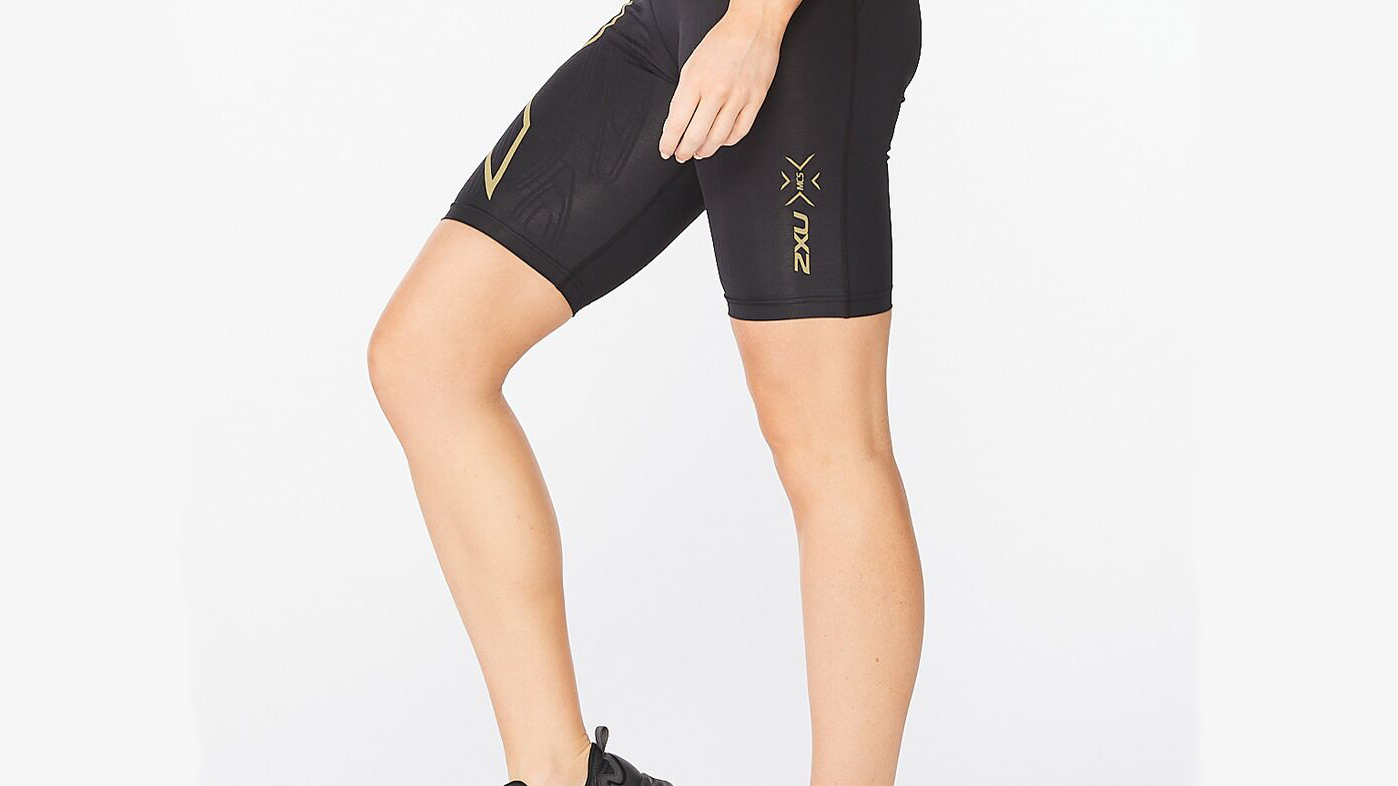2XU Light Speed vs CEP Run Shorts: Which compressions shorts for running are the best?
2XU Light Speed Mid-Rise Compression Shorts versus CEP Run Shorts 3.0: the best compression shorts to boost your runs


There are many benefits to be had from wearing the best compressions shorts. Sure, wrestling into a pair of these super-tight slippery suckers can sometimes take longer than your actual workout, but once you’ve experienced the performance-enhancing benefits – from increased blood flow and lactate removal to reduced muscle strain and faster recovery – you’ll wonder how you ever trained without them.
Compression shorts work by delivering targeted pressure to certain areas of the body using cutting-edge fabrics. And while they need to be tight enough to deliver the right amount of support, it’s also important that they are comfortable enough to go the distance. Because, while it’s all well and good being trussed up in the name of a faster P.B., nothing spells disaster more than restricted movement, chaffing seams, or a too-tight waistband.
With this in mind, we decided to put two of the best-selling compression shorts for running to the test. Both 2XU and CEP are at the top of the compression clothing game, but CEP does come in at a slightly higher price point. Does this make a difference to your performance on the road? I donned my trainers and sports bra to find out.
2xu Light Speed Mid-Rise Compression Shorts Vs Cep Run Shorts 3.0: Price And Availability
The 2XU Light Speed Mid-Rise Compressions Shorts are available now for a recommended retail price of £65 / $84.99 / AU$199.99 and can be purchased directly from 2XU UK / 2XU US / 2XU Australia.
Alternatively, you can buy the CEP Run Shorts 3.0 for a recommended retail price of £79.95 / $99.95 / AU$179.95 from CEP UK / CEP US / CEP Australia.

2xu Light Speed Mid-Rise Compression Shorts Vs Cep Run Shorts 3.0: Materials And Fit
Compression clothing is designed to fit tightly so it can effectively do its job of, well, compressing. Therefore, it’s always worth paying attention to sizing guides and buyer reviews - and grabbing a tape measure to accurately note your current body measurements – so you can work out if you should order your usual size or size up for a better fit.
The 2XU shorts are available in a male version from sizes S to XXL and a female version which can be purchased in XS to XL. After much research, I ordered my normal dress size and was pleased to find they fit perfectly.
Get all the latest news, reviews, deals and buying guides on gorgeous tech, home and active products from the T3 experts
The CEP shorts, however, take a different approach to sizing. Both the male and female versions come in sizes I to V, and you find your size by measuring the circumference of your mid-thigh, completely ignoring your waist measurement. My thighs fell between sizes, so I erred on the side of caution and chose the larger size, which I’m glad I did otherwise I wouldn’t have got them on – but this is with good reason, as I’ll explain later.
When placed on top of each other, the two pairs of shorts were practically identical in terms of size, shape, and length. But the use of different fabrics between the two styles meant the level of stretch across the thighs was dissimilar.

The 2XU shorts are made from a lightweight and silky PWX fabric that is circularly knitted to provide 360-degree stretch. To look at them straight out of the box, you wouldn’t think they offered any level of compression. But once you pull them on and the fabric stretches across the legs (or you look at the reverse of the fabric), you suddenly see the many swirling contours of the compression built into the fabric.
This, in fact, is the Muscle Containment Stamping (MCS) technology, which traces the quadriceps to help dissipate the load transfer on the knee joint during running. And it’s this precise placement of the compression that lets you enjoy the feel of the lightweight PWX fabric all over your lower half while getting the compression benefits exactly where you need it.
In comparison, the CEP shorts are constructed from two types of fabric, and designed to optimally support the thigh muscles by completely encasing them in a thicker, tightly woven ‘medi compression’ fabric that’s a little rough to the touch. Meanwhile, the waist, glute and hip areas are made from a smooth, comfier, lighter fabric to aid breathability and wearability. The compression fabric around the thighs has more noticeably supportive feel than the 2XU shorts and is more akin to what I’d usually expect from a pair of compression shorts, but I also found them a little tight above the knees and around the thighs (maybe I should have ordered another thigh-size up?)
In terms of overall fit and comfort, I preferred the 2XU shorts because they have a wider, higher waistband that stays firmly in squat-proof place, are silky smooth and lightweight, and have a comfy level of stretch that makes them useable for gym workouts as well as runs.
In comparison, the CEP shorts sat a little lower on the waist and needed the occasional tug, were less silky, and were more restrictive around the thighs. This meant I wouldn’t wear them for general workouts and multi-directional movement, although they are perfect for their intended use of running.

2xu Light Speed Mid-Rise Compression Shorts Vs Cep Run Shorts 3.0: Features And Style
If you like pockets, you’ll love the CEP shorts, which have two newly added, generously sized pockets on the hips for gels and a zip pocket for cards and keys underneath the waistband at the back.
The 2XU shorts have a large pocket for your phone (with a hole for your earphones cable), plus two smaller pockets, all built into the waistband at the back. But it takes a bit of wrestling to get a regular smartphone into the big pocket before you put the shorts on, and it’s not accessible once you’re wearing them.
In terms of looks, both designs are sleek and stylish with reflective detailing on the outside to improve visibility in low-light conditions, and drawstrings in the waistbands to help keep them up, although I think these would only be necessary for the CEP shorts if you have large thighs and a tiny waist, because both shorts fit like a glove and stay in place without the additional help of a drawstring.
If you favour understated style, you’ll like the CEP shorts in the black colourway, which have large, printed panels of grey dashes on both thighs that become reflective at night, although fans of brighter colours will prefer the plum version with contrasting orange panels, available for both men and women.
In terms of the 2XU shorts, ladies only get to choose a black style with a large gold, reflective ‘X’ logo, but blokes can get their logos in gold, silver or a bronze Turmeric colour. You’ll either find the large logo a bit sexy or a bit OTT, and it really comes down to personal preference.

2xu Light Speed Mid-Rise Compression Shorts Vs Cep Run Shorts 3.0: Performance
In terms of performance, both pairs of compressions shorts work extremely well, so trying to name a winner really is like splitting hairs. Simply put, there’s a reason why both styles are best-sellers for their respective brands.
The biggest difference between the shorts is that the CEP shorts deliver compression to the entire thigh area, while the 2XU shorts concentrate the compression to the quads which, seeing as the majority of runners are quad-dominant, makes sense.
Without being hooked up to a treadmill in a laboratory, it’s very hard to confirm whether either compression shorts did, in fact, boost my blood flow. But my muscles absolutely felt more supported whilst running in both pairs of shorts, and I definitely noticed a reduction in fatigue levels and recovery time compared to running in normal shorts or leggings.
If I absolutely had to choose a winner, the 2XU shorts would just pip the CEP shorts to the post, only because I found them less restrictive, slightly more breathable and comfy, and more versatile, i.e., they’re flexible enough to wear for gym workouts, too. But if you’re a serious runner, you will really like the hamstring support provided by the CEP shorts, in addition to the more useful pockets which let you stash plenty of fuel for long-distance runs.
2xu Light Speed Mid-Rise Compression Shorts Vs Cep Run Shorts 3.0: Verdict
These two compression shorts take a slightly different approach, with one offering concentrated support to the quads only, and the other providing support to the entire thigh area.
Both work wonders in terms of performance and recovery, though.
The question to ask before you buy either: Do you prefer all-over compression that will benefit the hamstrings yet leave you feeling ever-so-slightly restricted, or targeted compression to the quads that gives you a little more freedom of movement?
I’d say serious runners should spend a little more on the CEP shorts, but fitness fans who like gym sessions alongside runs will prefer the versatility of the 2XU shorts.

Jo is a London-based freelance journalist and content creator specialising in fitness, health, lifestyle and beauty. With a degree in Journalism, Film & Broadcasting from Cardiff University and almost 20 years’ experience in the industry, she interviews celebrities and Olympians for a living, while testing out the latest beauty, hair, wellness and fitness gadgets. As a Level 3 Personal Trainer and author of several fitness guides, she gets to try the coolest workouts while reviewing active travel destinations and writing investigative features about the wonderful world of wellbeing for many of the UK’s top magazines, newspapers and digital publications. When she’s not sitting at her laptop, Jo likes exploring new walking spots with her beagle, gardening, and DIY. She is also one of the few people on the planet still obsessed with what’s coming up in Phase 5 of the Marvel Cinematic Universe.